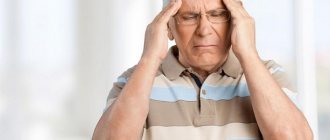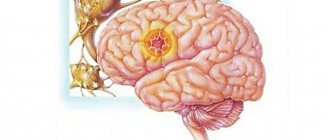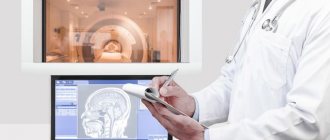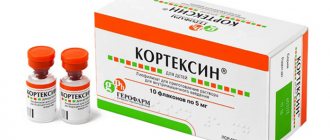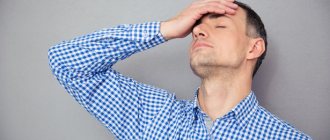What are we doing wrong?
“In our country it is very difficult to get an honest answer,” says pediatric neurologist Anna OSTROVERKHOVA .
– Parents have a vague idea of what results they can expect from rehabilitation, they seize every opportunity to show their child to a “fashionable” doctor, get a second (read: “one hundred and fifth”) opinion, they look for those who promise to put the child on his feet, sometimes giving his last money to miracle procedures, magic medicines. Most parents believe that everything depends on perseverance and intensity of activities: if you actively engage, then the child can be “stretched” and he will walk. Behind the idea of restoring the child, the child himself is lost.
His entire childhood passes under the banner of rehabilitation; often there is no time left for childhood itself: endless painful and completely ineffective injections of nootropics and vitamins, courses of useless massage, exercise therapy through pain and tears. Very often, efforts are made in completely the wrong direction: complex and ineffective activities are carried out, and there is not enough strength, time, or understanding for simple but vital things, or understanding that these actions are the only thing the child really needs.
I see children with severe cerebral palsy (level V according to GMFCS), who are “treated” all their lives, receive courses of nootropics and drugs that improve cerebral circulation, and receive monthly massages. After 10-14 years, the parents of a child with tetraparesis, with severe contractures, with spastic dislocations/subluxations of the hips, severe pain, severe underweight have only one request: to remove tone and contractures, so that the child does not suffer from pain, so that there is a little easier to care for. They no longer expect him to speak or even learn to hold his head up.
Why are there no such “neglected” children (whom our parents desperately “treated” all their lives) in developed countries? What do they do differently from us?
Firstly, parents receive a detailed diagnosis that determines the level of the child’s motor and communication functions. Secondly, knowing the degree of impairment of motor functions on the GMFCS scale, doctors determine the rehabilitation prognosis and potential of the child and honestly inform his parents, without feeding the parents’ unrealistic dreams and hopes for the child’s full recovery. Thirdly, adequate rehabilitation goals are chosen.
In the example described above, the child will most likely be placed on a baclofen pump to reduce tone, surgical treatment is possible to reduce pain, parents will use special positioning techniques to prevent contractures, the child will receive adequate nutrition, and will undergo medical examinations, including x-rays of the hip joints. The family will be provided with psychological support, parents will be taught alternative ways of communicating with the child.
But this is another illustration of the fact that a bitter truth is better than a sweet lie. Yes, the child will also not have the ability to move independently and perform purposeful actions, but he will be of adequate weight, without contractures, dislocations and pain, most likely he will have the strength for non-verbal communication, and it will be much easier for parents to care for him in adolescence."
Principles of rehabilitation from the perspective of evidence-based medicine
Photo: Anna Galperina
Ideas about the rehabilitation of children with cerebral palsy in the post-Soviet space and in developed countries differ.
“We generally believe,” shares Anna Ostroverkhova, “that the treatment of cerebral palsy consists of eliminating the damage that led to the disease. If the cause of cerebral palsy lies in damage to brain tissue, then it is imperative to “help” the brain, trying to “patch” the lesion, prescribing medications containing extracts of the brains of pigs and cows, be sure to “improve” blood circulation and flavor the brain cells with vitamins. Well, physical methods of rehabilitation consist only of improving/developing impaired motor function, and include the appointment of massage to relieve muscle tone, passive gymnastics, and older children do exercise therapy with an instructor.
Rehabilitation of children under one year old looks something like this: first, the massage therapist actively massages tense muscles (as a rule, this brings pain and discomfort to the child, which makes him scream and strain even more), and then does gymnastics with the child, passively bending/extending his limbs, doing exercises in which the child has a “led” role, i.e., the movements that the child makes are imposed on adults, and do not come from the child.
It turns out that the child becomes an object on which various actions are performed.
At the same time, an insane amount of parental effort, effort, emotional and material costs are spent on these actions. But if we compare the condition after rehabilitation of our children with cerebral palsy and children with the same initial data in Europe, America or Australia, then, frankly, a suspicion creeps in that we are doing something wrong. Our model turns out to be less efficient.
The modern rehabilitation model is based on different principles.
Firstly, we accept the fact that the area of the brain responsible for certain movements is damaged and, most likely, there is nothing in its place (a cyst with cerebrospinal fluid, for example), we do not try to “resurrect” these cells by introducing brain cells animals to an anatomical zone located at the completely opposite end of the body, improve blood circulation in those areas that physically do not exist. Also, we accept the fact that the cells that remain alive are absolutely functional and there is no need to improve anything in them either, because they were not damaged and remained normal. And these are not just philosophical arguments and conclusions. These are the results of studies that have not proven the effectiveness (and also safety) of nootropics and others like them.
No one in developed countries uses nootropics to treat anything.
Secondly, we recognize the fact that man is a rather lazy creature and will not try to do something for which he is not motivated. You can passively perform some kind of manipulation with a child for as long as you like, but if he is not motivated to perform the movement, or it is performed with great protest on the part of the child, after completing the rehabilitation course this skill is unlikely to be consolidated. Therefore, we definitely motivate the child to perform the movement (for example, the massage therapist not only skillfully turns the child from his back to his stomach, controlling the child’s legs, but a bright toy is placed next to the child, which he tries to reach, i.e., motivation is created, and already during the process, the adult can show the child how to perform the movement correctly).
In other words, the child must understand what he is doing and why. And for the purposes of the rehabilitation course, it will not be “decrease in tone in the upper extremities and improve fine motor skills” that will be prescribed, but a specific action that the child must learn to perform. For example, “learn to bring a spoon to your mouth, eat 10 spoons of porridge on your own.” To do this, undoubtedly, you will need to work on your tone and motor skills. But these will all be auxiliary things for a clear purpose and with good motivation.
Thirdly, the rehabilitation program is written individually for a specific child and cannot be the same for children even of the same GMFCS level.
We recognize the fact that no two children with cerebral palsy are alike.
Even if the lesion is absolutely the same and the possibilities of movement are also absolutely the same, most likely these will be children with different temperaments and different living conditions. One will live in an apartment building with a ramp, and his priority will be to keep his balance while reaching for the elevator button, or pick up the intercom and open the door, and the other will live in a private house, where it will be important to learn to keep his balance while walking through his mother’s garden and climb up the stairs to the second floor of the house, for example.
Fourthly, you need to work with your child every day. Classes with specialists are very important, but will be ineffective if they are not reinforced every day. Rehabilitation is primarily the work of parents; the task of specialists is to help parents create a program and train parents to perform tasks that they can perform in everyday life without being specialists.”
The Fund for Supporting Disabled Persons with Cerebral Palsy and Traumatic Brain Injury was created by parents of sick children in 2009. The idea of creating it came to Professor Ksenia Aleksandrovna Semenova, who devoted her entire life to solving the problem of cerebral palsy. Ksenia Aleksandrovna became the editor-in-chief of the magazine “Life with Cerebral Palsy. Problems and Solutions”, published by the Foundation “Life with Cerebral Palsy”. The goal was to create an information platform; awareness at that time was at a low level. It was difficult for specialists and parents to find each other, and the magazine combined this opportunity.
At the time of the creation of the fund, the priority areas were: facilitating the provision of qualified professional information support to parents raising children with cerebral palsy, as well as other categories of the population involved in the problem of cerebral palsy; attracting volunteers to work in the foundation; assistance in supporting the publication of a thematic magazine that exists with the money of parents of disabled children and resolving the issue of allocating budget funding for the magazine “Life with Cerebral Palsy. Problems and solutions"; cooperation with foundations of international public and charitable organizations.
issues of the magazine “Life with Cerebral Palsy”
Over time, the goals were adjusted and eleven years later (the foundation and the magazine have already existed for so many years), the magazine continues to be published, but with funds from philanthropists, and not from parents with children with cerebral palsy. In 2015, the founder of the fund and the magazine was the actor and musician Gosha Kutsenko. Mila Solovyova became the director of the Life with Cerebral Palsy foundation and the editor-in-chief of the Life with Cerebral Palsy magazine .
And it was with their arrival that positive changes began to occur in the magazine. The new team transformed the content of the magazine and breathed new life into it. The magazine has become more glossy and aesthetic. The paper on which the magazine is published is Finnish-made; the magazine is printed at the a2press printing house. The magazine is published 4 times a year, and on its covers are those who are closely associated with cerebral palsy and charity.
A “Dialogue Platform” section has appeared, which parents love very much. For them, this is an opportunity to speak out, share painful or, conversely, success, and motivate others by their example. And a magazine is very important for adults with cerebral palsy, because for them sometimes a magazine is the only opportunity to get the information they need. Not only the official part of the magazine has changed, but also its content itself. There are fewer medical topics and more social ones. Undoubtedly, treatment is very important and the magazine continues to publish information about rehabilitation, new innovative methods of treatment, and does not forget about scientific and practical articles. But no less important and relevant is the socialization of people with cerebral palsy in society. The attitude towards children with cerebral palsy that is often encountered today is puzzling. Parents are faced with treatment that they do not deserve. Therefore, it is so important to convey to society that people with disabilities are unlimited, they are not superfluous. This is what social journalism does. Identify a way of life that can organically combine treatment and social activity.
Magazine “Life with cerebral palsy. Problems and Solutions” has great social significance. A child diagnosed with cerebral palsy undergoes treatment and rehabilitation on average once or twice a year, and this directly depends on the capabilities of the family. And if the financial capabilities of the family allow, then rehabilitation can be obtained more often, but if not, then the family is left alone with the disease, when future life depends on every step, every action. And that’s when the problems begin - with finding the necessary information, how to help a child at home, how to get additional benefits and how to find out about them, where to learn about legal issues and where to get advice from a doctor or other specialist, learn about new innovative methods of treatment and rehabilitation. In the only specialized printed magazine in Russia “Life with Cerebral Palsy. Problems and Solutions”, parents of children with cerebral palsy can find such information and ask questions, receive consulting and information support, social and legal assistance.
Maria Ivanova distributes information brochures to parents with children with cerebral palsy
Mila Solovyova, editor-in-chief of the magazine “Life with Cerebral Palsy” : “All last year, my team and I did not know when the next issue of the magazine would be published. But we were absolutely sure that it would definitely work out. Let it be delayed, let it reach the regions late, but they will definitely receive it and be able to read it. Many readers write letters by regular mail. And for this I am eternally grateful to them. Despite the presence of social networks, the Internet, and instant messengers, people continue to write paper letters. And this means that our magazine goes to the address where it is expected. And where there is no access to the Internet and the information that is posted there. And the only information source is the magazine. Due to various circumstances. Some people simply don’t have the money to pay for home Internet, some don’t use smartphones on principle, and some can’t use all modern technologies and have only one option – a printed magazine. So he keeps going out. And I believe that caring people will continue to support us, because now the magazine is published with funds from philanthropists. And ordinary people need it just as much as families with children with cerebral palsy. In the magazine we tell the stories of philanthropists, those who have found the resources to help others. This is also a step, an important step in life. Take this path and learn to share with those who care. Even one ruble transferred to a charitable foundation makes a person different. People change when they start helping, participating in charity events, volunteering, and investing their efforts for the benefit of other people. I communicate with many media people, do interviews for a magazine, and I always ask everyone the same question - about charity and why they do it. And not once did I hear the answer - that it was because of excess finances. As a rule, charity begins from the heart. This has already happened historically. Many patrons and philanthropists began to move along this path not when they had money, but much earlier, sometimes at moments when they had nothing at all. People often think like this: I can’t be a philanthropist and help people, I don’t have money myself. But it's not about the money. Charity is, first of all, about your own capabilities - what you personally know how to do. After all, everyone has their own personal unlimited resource that can be invested in helping others. These are your own strengths and skills, time. During the pandemic, our team gathered volunteers to help families with cerebral palsy. We traveled around Moscow and the region and delivered kits with hygiene products to families who needed it. And all so that they take care of their health and stay at home. People spent their resources themselves, voluntarily. Gasoline, food - after all, it took all day to travel. During this period, we delivered more than 1,500 kits and helped so many families. I am proud of them and eternally grateful to them.”
Speech at the round table of the project “Family from the Inside Out”
This year, the Life with Cerebral Palsy Foundation is implementing a new project, “Family from the Inside Out,” as part of a grant from the Department of Labor and Social Protection of the Population of Moscow. The first round table of the project was held on February 26 at the Childhood RRC, the next one is scheduled for May 10, 2021. “Family from the Inside Out” is a project aimed at dialogue between specialists from various fields of medicine and beyond, and families with children with special needs. All materials are published on the pages of the magazine “Life with Cerebral Palsy. Problems and solutions."
editor-in-chief of the magazine “Life with Cerebral Palsy. Problems and solutions" Mila Solovyova
The problem for which the magazine was created in 2009 is a very serious one. The involved audience is more than half a million children in Russia, the parents of these children, specialists dealing with this problem every day, medical personnel, teachers, psychologists. All of them need the magazine as an information platform, a dialogue platform, an opportunity to speak out and get advice, and receive important information on time. The publication of each issue of the magazine allows us to increase the awareness of parents with children with cerebral palsy, as well as the qualifications of specialists working in this field, to attract medical, educational, social institutions and organizations working with people with WHO, highly qualified specialists for consultations on the pages of the magazine and feedback. You can get acquainted with the magazine through the website https://cplife.ru and support the magazine https://cplife.ru/donation
Funds that help families with children with cerebral palsy.
The Galchonok Foundation - https://www.bf-galchonok.ru - launched a hotline to support people with cerebral palsy. Hotline phone: 8-800-500-36-25
“Gift to an Angel” Foundation - https://podarokangelu.com/ - the foundation has several programs, there is a rehabilitation center, the opportunity to purchase TSR funds, specialized clothing and shoes.
Adeli Foundation - https://www.adeli-club.com/ - assistance to teenagers and young people with disabilities
Foundation “Life with Cerebral Palsy” https://cplife.ru - implementation of a project for a network of clinics within walking distance, where you can undergo free rehabilitation, make an appointment by calling +7(926) 3270-64-23;
Foundation “Movement Up” - https://movementup.ru/ - assistance in rehabilitation, acquisition of TSR funds, organization of educational and entertainment leisure.
Foundation “Step Together” - https://shag-vmeste.ru - an application for receiving charitable assistance (treatment and rehabilitation, medicines, purchase of TSR, tickets for travel to the place of rehabilitation (Aeroflot), consulting assistance) can be filled out on the foundation’s website via section for beneficiaries, registration is not required.
The Dobroserdie Foundation - https://dobroserdie.com/ - implements projects for the rehabilitation of children with cerebral palsy, there are charity projects "Charity sale" and "Charity Box".
Foundation "Creation" - https://bf-sozidanie.ru - support for low-income families, assistance with education, rehabilitation in the Russian Federation.

